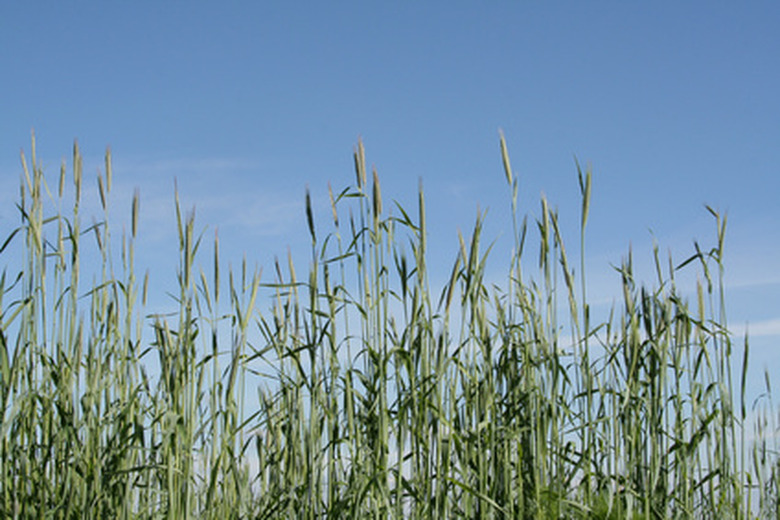Types Of Winter Grass Horses Can Eat
Winter grasses help extend horse grazing from late fall through the early summer, once more grasses and legumes become available. Most grasses provide good grazing during December through March, if planted in October or November. Some varieties of winter-growing grass also make great hay for later use.
Annual Ryegrass
Annual ryegrass primarily works as a high-protein winter food to feed horses when hay shortages occur in the southeastern United States. The grass also grows in coastal Pacific Northwest meadows, although using it for hay is not recommended. Sometimes ranchers overseed warm season perennial grass to help extend the grazing season. Growing to a height of 2 to 4 feet, the seed may be sown in wet or dry conditions, with germination occurring after a good rain if planted on a dry day. The seed features quick germination, especially in late fall. Ryegrass also grows on poorly drained soils, where it is used for silage. In the winter, the grass requires 150 pounds of nitrogen fertilizer per acre.
- Winter grasses help extend horse grazing from late fall through the early summer, once more grasses and legumes become available.
- Growing to a height of 2 to 4 feet, the seed may be sown in wet or dry conditions, with germination occurring after a good rain if planted on a dry day.
Orchardgrass
A cool-season, nutritious perennial bunchgrass used to feed horses, orchardgrass grows from 2 to 4 feet in height with a panicle-type seed head that reaches 10 inches in length. Originating in Europe, the grass thrives in the Pacific Northwest as well as from South and North Dakota, to Kentucky and Tennessee. Orchardgrass grows as a short-life perennial with a 2- to 4-year lifespan. The grass works well for pasture and hay. Plant 15 to 20 pounds per acre in August and September in richly-tilled soil. Orchardgrass requires high amounts of fertilizer and responds well to nitrogen, so you'll need a soil test to determine how much fertilizer to apply.
Tall Fescue
A vigorous-growing, cool-season grass, tall fescue retains its leaves even in cold temperatures, making it good foraging material for horses. Most people use it to extend the grazing season into early spring. The best tall fescue varieties include MaxQ Pasture Fescue Grass and Bronson Tall Fescue. Both varieties seem resistant to endophytes, a fungus that wreaks havoc on horses that eat the infected grass. Both MaxQ and Bronson Tall Fescue offer endophyte-friendly mixes that do not harm horses. The grasses grow up to 4 feet in height, and work well for pasture, hay or silage material. Fertilize tall fescue, allowing time for the grass to thicken and recover from hoof damage before allowing the horses to graze in the area again. Tall fescue grass also works well in areas that need erosion control.
- A cool-season, nutritious perennial bunchgrass used to feed horses, orchardgrass grows from 2 to 4 feet in height with a panicle-type seed head that reaches 10 inches in length.
- Tall fescue grass also works well in areas that need erosion control.
Passerel Plus Ryegrass
Passerel Plus ryegrass provides horses with high-protein foraging material in the winter (or in the spring, if planted in the fall. The cold-tolerant grass offers high forage yields in winter, where it thrives in the south from eastern Texas and Oklahoma all the way to the Atlantic coast. Plant 30 to 35 pounds per acre in September and October in a prepared seed bed, preferably in soil with good water-holding capacity. Plant the seed 1/2 inch deep. Seed germinates in 7 to 10 days. Passerel Plus often yields two cuttings in the winter. Perform soil tests to calculate nitrogen, phosphorus and potassium fertilizer requirements.
- Passerel Plus ryegrass provides horses with high-protein foraging material in the winter (or in the spring, if planted in the fall.
